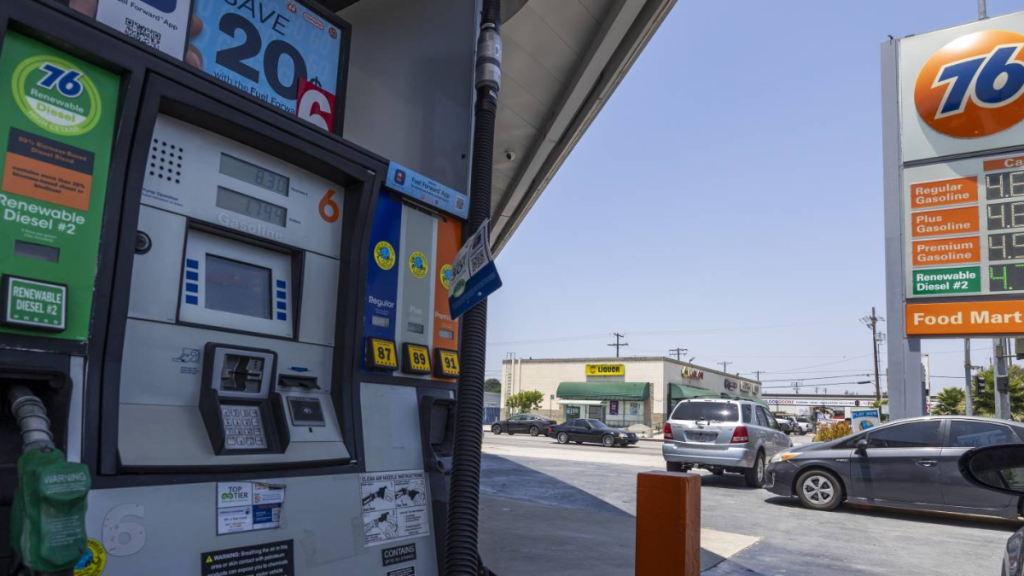Sacramento, CA – California drivers may soon face some of the highest fuel prices in the nation, with projections indicating gasoline prices could reach as high as $8 per gallon by 2026.
This alarming forecast comes amid a perfect storm of refinery closures, stringent environmental regulations, supply chain vulnerabilities, and unpredictable global oil market dynamics.
As the state grapples with these overlapping challenges, residents and policymakers alike are bracing for what could be a significant increase in the cost of driving—and living—in California.
Refinery Closures Create a Supply Crunch
A critical factor fueling these projected price increases is the imminent closure of two of California’s largest oil refineries. The Phillips 66 refinery in Los Angeles is slated to shut down by the end of 2025, and the Valero refinery in Benicia is expected to cease operations by April 2026.
These closures alone could reduce California’s refining capacity by approximately 21%, cutting out an estimated 13.1 million gallons of gasoline per day from the state’s supply chain.
This significant reduction threatens to tighten the supply of gasoline in California, which already imports a substantial portion of its fuel.
With fewer refineries operating, the state may become increasingly dependent on imported gasoline transported via rail and tanker ships—methods that are both more expensive and more vulnerable to disruptions.
The Impact of Environmental Regulations
California’s ambitious climate policies also play a role in pushing fuel prices higher. The state’s Low Carbon Fuel Standard (LCFS), enforced by the California Air Resources Board (CARB), mandates a reduction in the carbon intensity of fuels.
While these rules are designed to curb greenhouse gas emissions and promote cleaner energy, they also increase the production costs of gasoline.
Under the LCFS, refiners must blend cleaner, often costlier fuels or purchase carbon credits, expenses that typically get passed on to consumers at the pump. Additional regulations proposed by CARB could add as much as 52 cents per gallon by 2026, compounding the financial burden on drivers .
Global Oil Market Volatility
Gasoline prices in California are also influenced heavily by global oil markets. California relies on imported crude oil for a large share of its refinery feedstock.
Consequently, fluctuations in crude oil prices due to geopolitical tensions, production cuts by major oil-exporting countries, or supply disruptions directly impact fuel costs within the state.
For instance, conflicts in key oil-producing regions or decisions by organizations such as OPEC+ to reduce production can send crude prices soaring. These increases translate to higher costs for refineries and, ultimately, drivers.
Given California’s reliance on foreign oil, the state’s gasoline prices tend to be more sensitive to international market shifts than many other parts of the United States.

Supply Chain Challenges Compound the Problem
California’s fuel supply chain also faces logistical challenges that can exacerbate price spikes. The state’s limited pipeline infrastructure necessitates reliance on maritime and rail transport for fuel imports.
These modes are more susceptible to delays caused by labor disputes, extreme weather events, or port congestion.
For example, severe storms or earthquakes could damage critical transport routes, leading to temporary shortages and rapid price increases. Additionally, disruptions at ports or strikes by dockworkers can slow fuel delivery, causing supply bottlenecks that translate into higher prices at gas stations across the state.
Economic Implications for Californians
The prospect of $8-per-gallon gasoline carries significant economic consequences. Fuel is a foundational input in many sectors, from transportation and agriculture to manufacturing and retail.
When gasoline prices rise sharply, businesses face higher transportation and production costs, which they often pass on to consumers through increased prices for goods and services.
This ripple effect can lead to broader inflationary pressures, reducing purchasing power for households and putting a strain on California’s cost of living—already among the highest in the nation.
Low- and middle-income families may be disproportionately affected, as they tend to spend a larger share of their income on fuel and transportation.
Policymaker and Industry Responses
In response to these growing concerns, California state lawmakers have called on Governor Gavin Newsom and state agencies to take immediate action to mitigate the impact of refinery closures and rising fuel costs.
Proposed measures include offering incentives to keep existing refineries operational, encouraging investments in cleaner and more efficient energy alternatives, and upgrading infrastructure to improve the resilience of fuel supply chains.
Governor Newsom has also emphasized the state’s commitment to transitioning toward renewable energy sources and zero-emission vehicles, which could reduce reliance on gasoline in the long term.
However, the immediate challenge remains how to balance environmental goals with the economic realities facing consumers today.
The Road Ahead: Navigating Energy Transition and Affordability
While the forecasted $8-per-gallon gasoline price is not guaranteed, it underscores the urgent need for comprehensive energy planning in California.
As the state pursues its aggressive climate targets, it must also ensure energy affordability and reliability to avoid placing undue burdens on its residents and businesses.
Efforts to accelerate the adoption of electric vehicles, expand public transportation, and develop renewable energy infrastructure will be critical components of this transition.
At the same time, short-term strategies to stabilize gasoline supply and prices will be essential to maintain economic stability and consumer confidence.
For Californians wanting to stay informed about energy policies and initiatives, the California Energy Commission provides extensive resources and updates. Likewise, the California Air Resources Board offers detailed information about environmental regulations impacting fuel and air quality.
Disclaimer – Our team has carefully fact-checked this article to make sure it’s accurate and free from any misinformation. We’re dedicated to keeping our content honest and reliable for our readers.
